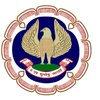Filter interviews by
The Jain International School PRT Teacher Interview Questions and Answers
The Jain International School PRT Teacher Interview Experiences
1 interview found
I applied via AmbitionBox and was interviewed in Mar 2023. There were 2 interview rounds.

(2 Questions)
- Q1. Introduce yourself
- Q2. How will you start your class
Top trending discussions






Interview questions from similar companies

I appeared for an interview before Mar 2021.


(4 Questions)
- Q1. What are your salary expectations?
- Q2. How you increase confidance of Poor students
- Ans.
Encourage them to set achievable goals, provide positive feedback, and offer extra support.
Help them identify their strengths and build on them
Provide opportunities for success and recognition
Offer extra help and resources, such as tutoring or mentorship
Encourage them to take risks and learn from mistakes
Create a supportive and inclusive classroom environment
Provide positive feedback and praise for effort and progress
S...
- Q3. Tell me about some types of teaching methods
- Ans.
Teaching methods include lecture, discussion, demonstration, and inquiry-based learning.
Lecture: teacher presents information to students
Discussion: students participate in conversation and share ideas
Demonstration: teacher shows how to do something
Inquiry-based learning: students explore a topic and ask questions
- Q4. What is the definition of a good teacher
- Ans.
A good teacher is someone who inspires and empowers their students to learn and grow.
A good teacher has a deep knowledge and understanding of the subject they teach.
A good teacher is passionate about teaching and genuinely cares about their students' success.
A good teacher is patient, empathetic, and able to connect with students on an individual level.
A good teacher creates a positive and inclusive learning environmen...
Interview Preparation Tips
- Know about company and job

(2 Questions)
- Q1. What would I bring to the team
- Ans.
I would bring creativity, enthusiasm, and a passion for student success to the team as a Primary Teacher.
I have a strong background in creating engaging lesson plans and activities to keep students motivated and excited about learning.
I am dedicated to fostering a positive and inclusive classroom environment where all students feel valued and supported.
I have experience in differentiating instruction to meet the divers...
- Q2. Tell us about yourself and why you want to make the move

Teacher Interview Questions & Answers
Billabong High International Schoolposted on 17 Sep 2023
I applied via Approached by Company

(1 Question)
- Q1. Topics presentation
(1 Question)
- Q1. Topic Presentation
Interview Preparation Tips

I appeared for an interview in Jan 2025.
(7 Questions)
- Q1. What is motion?
- Ans.
Motion is the act of changing position or location over time.
Motion is the change in position of an object with respect to a reference point.
It can be described in terms of distance, displacement, speed, velocity, and acceleration.
Examples of motion include a car moving along a road, a ball rolling down a hill, and a person walking.
Motion can be linear, circular, oscillatory, or random.
- Q2. What is force?
- Ans.
Force is a push or pull acting upon an object as a result of its interaction with another object.
Force is a vector quantity, meaning it has both magnitude and direction.
Examples of forces include gravity, friction, tension, and normal force.
Force can cause objects to accelerate, decelerate, or change direction.
Newton's laws of motion describe the relationship between force and motion.
- Q3. What is inertia?
- Ans.
Inertia is the tendency of an object to resist changes in its motion.
Inertia is a property of matter that causes objects to stay at rest or in motion unless acted upon by an external force.
The greater the mass of an object, the greater its inertia.
Examples of inertia include a book staying on a table until pushed, a ball rolling until friction stops it, and a car continuing to move forward when the brakes are applied s
- Q4. What is definition of speed?
- Ans.
Speed is the rate at which an object covers distance.
Speed is a scalar quantity, meaning it only has magnitude and no direction.
It is calculated by dividing the distance traveled by the time taken.
For example, if a car travels 100 miles in 2 hours, its speed is 50 miles per hour.
- Q5. What is the best definition of length?
- Ans.
Length is the measurement of the distance from one point to another in a straight line.
Length is a fundamental measurement in geometry and physics.
It is typically measured in units such as meters, centimeters, or feet.
Examples of length include the height of a person, the length of a table, or the distance between two cities.
- Q6. What is definition of velocity?
- Ans.
Velocity is the rate of change of an object's position with respect to time.
Velocity is a vector quantity, meaning it has both magnitude and direction.
It is calculated as the displacement of an object divided by the time taken to cover that displacement.
For example, if a car travels 100 miles in 2 hours in a northward direction, its velocity is 50 miles per hour north.
- Q7. What is the most accurate definition of speed?
- Ans.
Speed is the rate at which an object covers distance.
Speed is a scalar quantity, meaning it only has magnitude and no direction.
It is calculated by dividing the distance traveled by the time taken.
For example, if a car travels 100 miles in 2 hours, its speed is 50 miles per hour.
(2 Questions)
- Q1. What is the definition of velocity?
- Ans.
Velocity is the rate of change of an object's position with respect to time.
Velocity is a vector quantity, meaning it has both magnitude and direction.
It is calculated as the displacement of an object divided by the time taken to cover that displacement.
For example, if a car travels 100 miles in 2 hours eastwards, its velocity is 50 miles per hour east.
Velocity can be positive, negative, or zero depending on the direct
- Q2. What is density?
- Ans.
Density is a measure of how much mass is contained in a given volume.
Density is calculated by dividing the mass of an object by its volume.
Common units for density include g/cm^3 or kg/m^3.
Density can help identify substances - for example, oil floats on water because it is less dense.
Interview Preparation Tips

Teacher Interview Questions & Answers
Billabong High International Schoolposted on 14 Jul 2024
(2 Questions)
- Q1. What is your educational Background
- Q2. What are your salary expectations
I applied via Walk-in and was interviewed before Dec 2022. There was 1 interview round.
(1 Question)
- Q1. About yourself About locating
I applied via Walk-in and was interviewed before Mar 2022. There were 3 interview rounds.

(3 Questions)
- Q1. Comprehensive passage both prose poetry ,
- Q2. Child pedagogy n skill developments
- Q3. Grammar based topics
(3 Questions)
- Q1. Work experience, skills,
- Q2. Grammar based questions
- Q3. General information questions
Interview Preparation Tips
Prepare with visual aids for demo for the subject or topic u choose
A well- planned lesson plan will support ur recruitment
I applied via Newspaper Ad and was interviewed in Jan 2022. There were 2 interview rounds.

(3 Questions)
- Q1. Tell me something about yourself!
- Ans. As you know I have done my academics with these percentage. After completing my academics I have joined a school where I worked as a TGT science teacher. And when I saw your add I thought I got my kick and I came here.
- Q2. Why do you think that you are suitable for this job?
- Ans. Being a mother I know how to handle children according to their requirements. I have a lot of patience with full command on my subjects. And as you can see my resume graph it's always growing and adding new talent so I think I deserve this job.
- Q3. Suppose we are your students, explain any topic in front of us?
- Ans. I have already prepared for this and explain my favorite topic beautifully.
Interview Preparation Tips
PRT Teacher Interview Questions & Answers
Delhi Public School R.N Extensionposted on 20 Apr 2022
I applied via Company Website and was interviewed in Oct 2021. There were 3 interview rounds.
Written test
two rounds of interview
(1 Question)
- Q1. General interaction with teaching related strategies questions.

Interview Preparation Tips
- English Language
The Jain International School Interview FAQs
Tell us how to improve this page.
The Jain International School Interviews By Designations
- The Jain International School PRT Teacher Interview Questions
- The Jain International School Primary Teacher Interview Questions
- The Jain International School TGT Maths Teacher Interview Questions
- The Jain International School School Teacher Interview Questions
- The Jain International School Operations Manager Interview Questions
Interview Questions for Popular Designations
The Jain International School PRT Teacher Interview Process
based on 1 interview
Interview experience
Interview Questions from Similar Companies
The Jain International School PRT Teacher Reviews and Ratings
based on 1 review
Rating in categories
|
Principal
10
salaries
| ₹12 L/yr - ₹18 L/yr |
|
Teacher
8
salaries
| ₹1.8 L/yr - ₹3.5 L/yr |
|
School Teacher
6
salaries
| ₹1.2 L/yr - ₹2.7 L/yr |
|
Vice Principal
5
salaries
| ₹8.4 L/yr - ₹9 L/yr |
|
PGT English Teacher
5
salaries
| ₹1.8 L/yr - ₹4.8 L/yr |

Jetking Infotrain

Billabong High International School

The Institute Of Chartered Accountants

Jitm Skills
- Home >
- Interviews >
- The Jain International School Interview Questions >
- The Jain International School PRT Teacher Interview Questions












